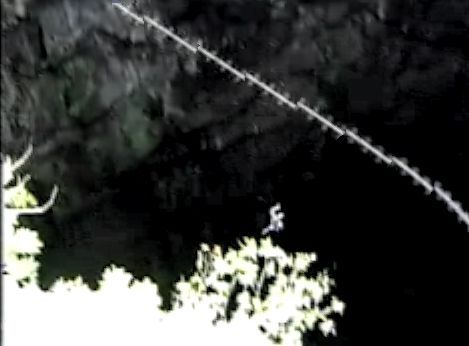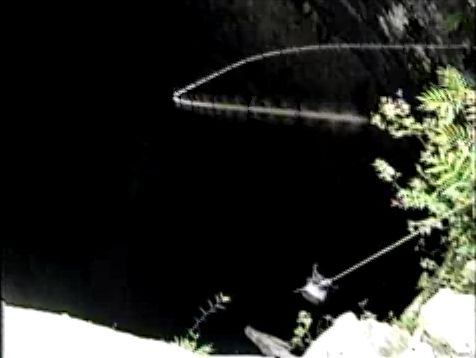"Paranormal" photos debunked.
Good set of pictures here, and the real explanations behind them.
http://www.cracked.com/photoplasty_680_15-famous-paranormal-photos-explained-by-science/
TxDemChem
(1,922 posts)I'd only ever seen three of those pictures before.
progressoid
(51,676 posts)It had all sorts of theories about what those ping pong ball things did! ![]()
William Seger
(11,740 posts)The top photo here:
 ?v=1
?v=1
... is from a "rods" study done around 2000 or 2001 by a friend of mine, posted here: http://odbic.com/sol/seq.htm
The photo is a composite of several video frames posted around 1999 or 2000 on a site called Roswell Rods by Jose Escamilla, the discoverer of the alleged phenomenon. It's one of a series of such composites made from Escamilla's video frame captures which all show a peculiar similarity: When sequential frames are composited like this, the "rods" are all separated by gaps the same length as the "rods."
It turns out that the reason is that the "rods" are really continuous streaks but Escamilla had posted only one field from each NTSC video frame. NTSC video is 30 frames per second, but each frame is two interlaced fields, captured sequentially rather than simultaneously, so NTSC is really 60 fields per second but with alternating scan lines.
In strong light, video cameras will of course cut back on the exposure time so the image isn't over-exposed, but in low light, video cameras will maximize light collection by using the full frame capture time. That means that the maximum exposure time for an NTSC camera is 1/60th sec.
What's happening, then, is that if a bug flies past the camera when it's using its longest exposure time, the image will be captured in successive fields as a continuous motion-blurred streak. In effect, the electronic shutter is open all the time so we see the complete flight path, but it's broken into 1/60th second segments. If you then take only one field from each NTSC frame, you get exactly the pattern shown in all of Escamilla's examples posted at that time: the "rods" are separated by gaps the same length because the gaps are "rods" in the fields not shown. This was proved elsewhere in the study when my friend found versions of two of the videos, including the one above, which have all the fields, and sure enough they form continuous streaks (with slight offsets in the first one because the camera was panning down):


The study goes on to show how easy it is to get the effect by shooting actual bugs -- or even tinfoil balls thrown in front of the camera -- and also shows examples collected from all over the web showing exactly the same pattern. In more recent videos shot with progressive-scan cameras, there are no gaps; the frame captures just directly show the continuous streaks because those cameras are capturing 30 full frames per second with an exposure time of 1/30th sec.
Escamilla has continued until this day to argue vociferously against that explanation, and he still has his website up -- still selling videos and trying to collect donations to make a feature-length documentary -- but he took down all of his damning examples. The only conclusion is that, while Escamilla may have initially been fooled by an effect that he thought was real and was going to make him rich and famous, these days he's just an ordinary fraud looking to capitalize on gullibility.
Since that study was done, there have been many people who have shown that bugs look exactly like "rods" and it's been debunked on several TV shows such as Monster Quest, but the streak pattern that my friend discovered is the convincing proof that all of Escamilla's "rods" -- indeed, apparently all "rods" -- are just flying bugs. And, I heard from my friend just a couple months ago, the effect is still popping up occasionally and fooling people.
SheilaT
(23,156 posts)of "paranormal" stuff, I always want to see crap shown to be crap. If (and that's a huge if) there are space travellers, or fairies, or time travelers, or anything else like that, I want to get rid of the hoaxes, the ignorant stuff, and such. I want only the irrefutable evidence of "paranormal" things to remain. If they can remain.